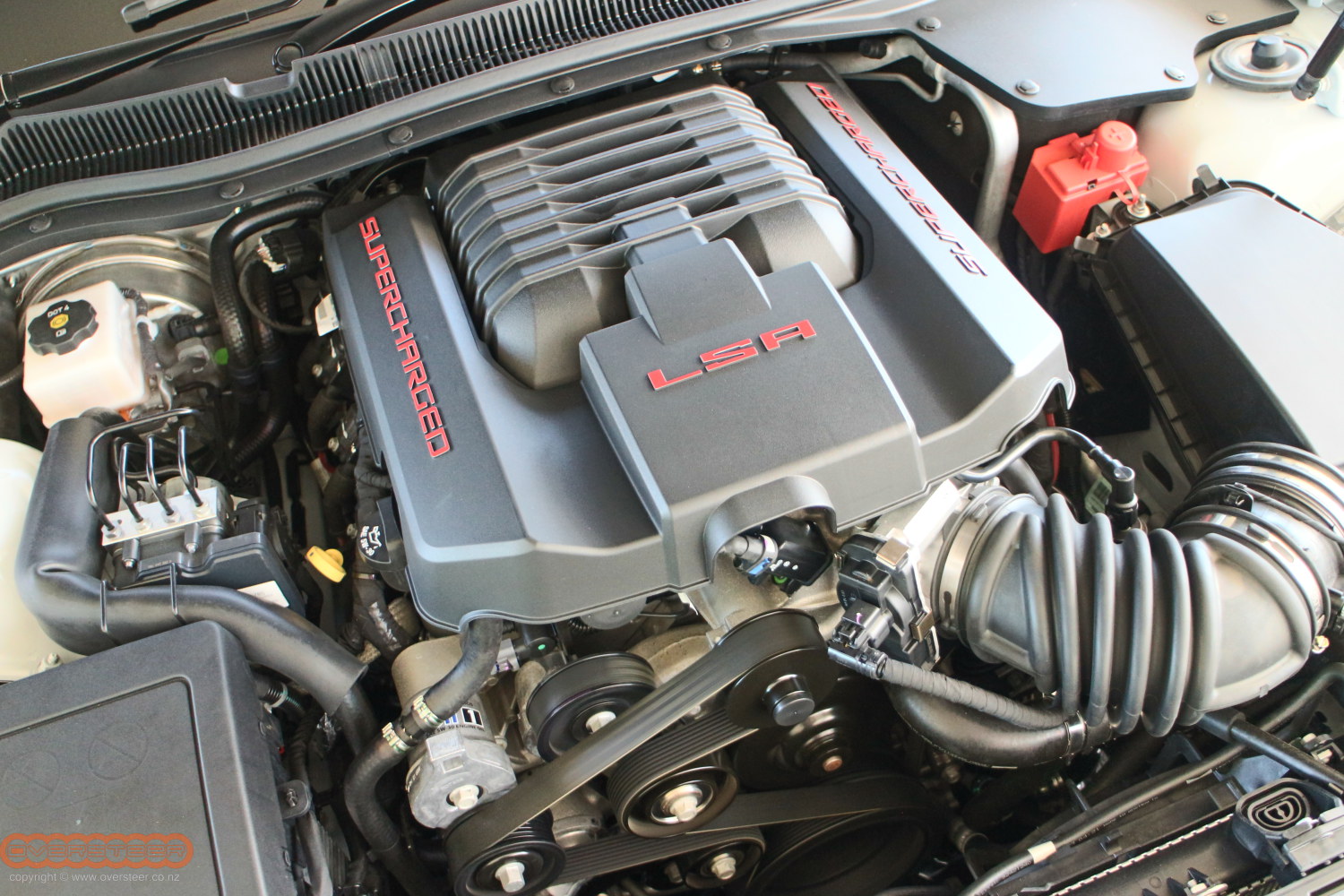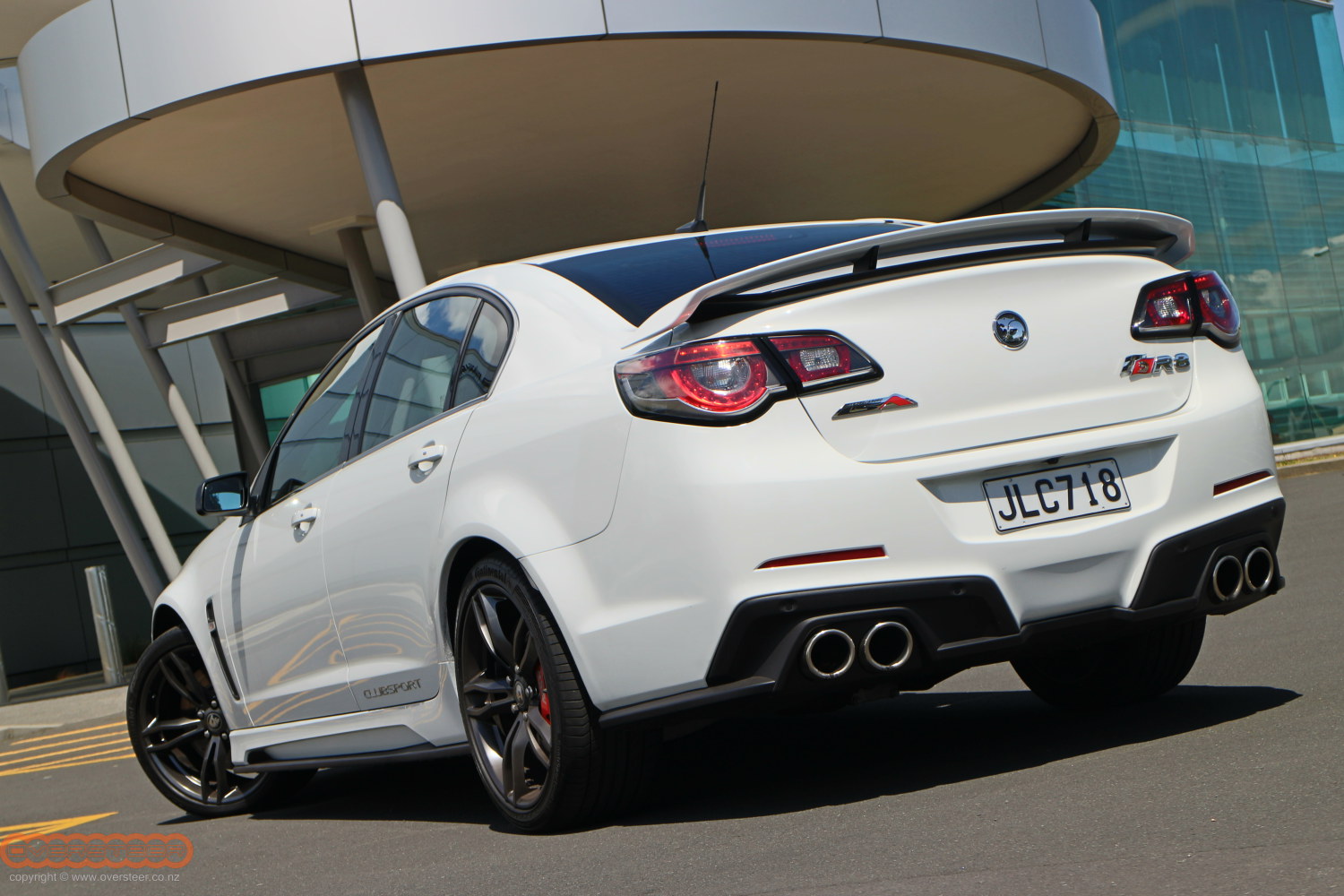Let us suppose for a minute that you are a comparatively small car manufacturer that creates your vehicles out of donor cars made by a related company, and your point of difference is extreme performance.
Then suppose that said donor company starts using the big, angry V8 that you used to slap in your entry models. Just what do you do?
Well, HSV’s solution would seem to be to go big.
When Holden recently adopted the mighty 6.2-litre LS3 V8 for the Commodore SS, that left HSV with something of a conundrum on its hands — after all, its principal points of difference over the Commodore were the mighty and angry engines it transplanted into the engine bays, and the LS3 had previously lived happily under the bonnet of the Clubsport R8.
So HSV did what any rational manufacturer of thoroughly irrational cars would do — they simply jammed a de-tuned version of their mental supercharged LSA V8 into the new Gen-F II Clubsport, in the process making the entire HSV range supercharged.
With an output of 400kW of power and 671Nm of torque, the LSA in the Clubsport R8 is down by 30kW and 69Nm on the same engine in the GTS, but is certainly not in any way lacking in power, performance or sound.
Oh, yes, the sound the LSA makes on full song is a truly majestic thing to behold, with a beautifully deep-chested below that requires sheer cubic capacity to truly produce, while the bi-modal exhaust is a thing of startling aggression — under full throttle and a sudden downshift, the valve in the exhaust literally sounds like it is exploding as it bangs open with what would have to be one of the most startling sounds a modern car can make on purpose.
While noise and drama is all fine and well, such a car needs the performance and handling to back up all the aural hilarity, and the R8 LSA has both in spades.
Of course, with 400kW and 691Nm, straight line performance of some kind is a given, but the sheer flexibility of the LSA engine is deeply impressive. Aggressive and angry when given a bootful, the power is also remarkably capable of being fed on gently and progressively, endowing the R8 with a subtly that isn’t usually aligned with HSV’s traditional muscle car image.
This makes the R8 docile and amenable around town and, with the Driver Preference dial turned to “Touring”, it is almost like an ordinary Commodore to live with. But crank that wonderful little dial around to “Sport” mode and it becomes anything but ordinary.
But despite all the fury and righteous anger, the R8 is remarkably forgiving and deceptively easy to drive very quickly indeed.
It does have a huge advantage in the first place, by being based on the thoroughly excellent Commodore platform, and while the R8 doesn’t get the Magnetic Ride Control suspension or the trick torque vectoring of the GTS, the HSV sports suspension does a mighty fine job of both absolutely hammering corners to death and dealing with the worst road surfaces New Zealand can throw at it.
While the steering does feel slightly remote and artificial, it does offer an acceptable degree of feel and its wonderfully sharp and precise. The R8’s nose turns in happily at most sane speeds (it will push slightly if you are truly mental, or on a track) and the rear is almost infinitely adjustable using the throttle, with tractable nature of the engine makes this a particularly enjoyable way to drive the R8.
But, of course, these days HSVs aren’t just about brute force (although that is still an incredibly important part of the package), they are also very much about technology and luxury, which may surprise someone who writes them off as low-brow, simple muscle cars. As such the R8 LSA, despite being an “entry level” car is absolutely packed with high-tech toys, assists and safety equipment.
As well as the mandatory safety electronics, such as stability control (that also features a wonderfully anti-social “competition mode that allows a remarkable amount of sideways fun, while still retaining a significant electronic safety net), the R8 LSA also comes standard with blind spot alert, forward collision warning and lane departure warning, as well as automatic parking assist, a heads up display, rain sensing wipers, automatic headlights and keyless entry and remote start.
Inside, while the automatic R8 LSA is clearly all about sportiness, there is still a strong focus on luxury in evidence.
While the R8 struggles to shrug off its Holden lineage here, the use of high quality materials, a thumping Bose audio system and the abundance of HSV logos help set it apart, while the HSV-specific leather sports seats are utterly magnificent.
While our $102,490 test car had a small number of options fitted (said by HSV’s local boss Andrew Lamb to be “representative of how most R8s are sold in New Zealand”) the most significant — alright, and fun — had to be the Enhanced Driver Interface (EDI) that is standard on the GTS and a $1195 option on the R8. Controlled through the car’s 20cm touchscreen, the EDI gives the driver access to not only a whole host of digital performance gauges and telemetry, but also a GPS data-logger that comes complete with maps for most of the local race tracks.
With huge helpings of serious performance, convincing amounts of luxury and that addictive noise and handling, the HSV R8 LSA is truly a benchmark Australian performance car and one that makes you question the need for the GTS. Until you drive a GTS, that is, then you never question its need to exist again.
As it stands, the R8 will do just fine, thank you, and sits alongside the GTS as a fairly convincing answer to who might finally win the battle that ignited the original Australian supercar scare …
This article first appeared on www.driven.co.nz







You must be logged in to post a comment.